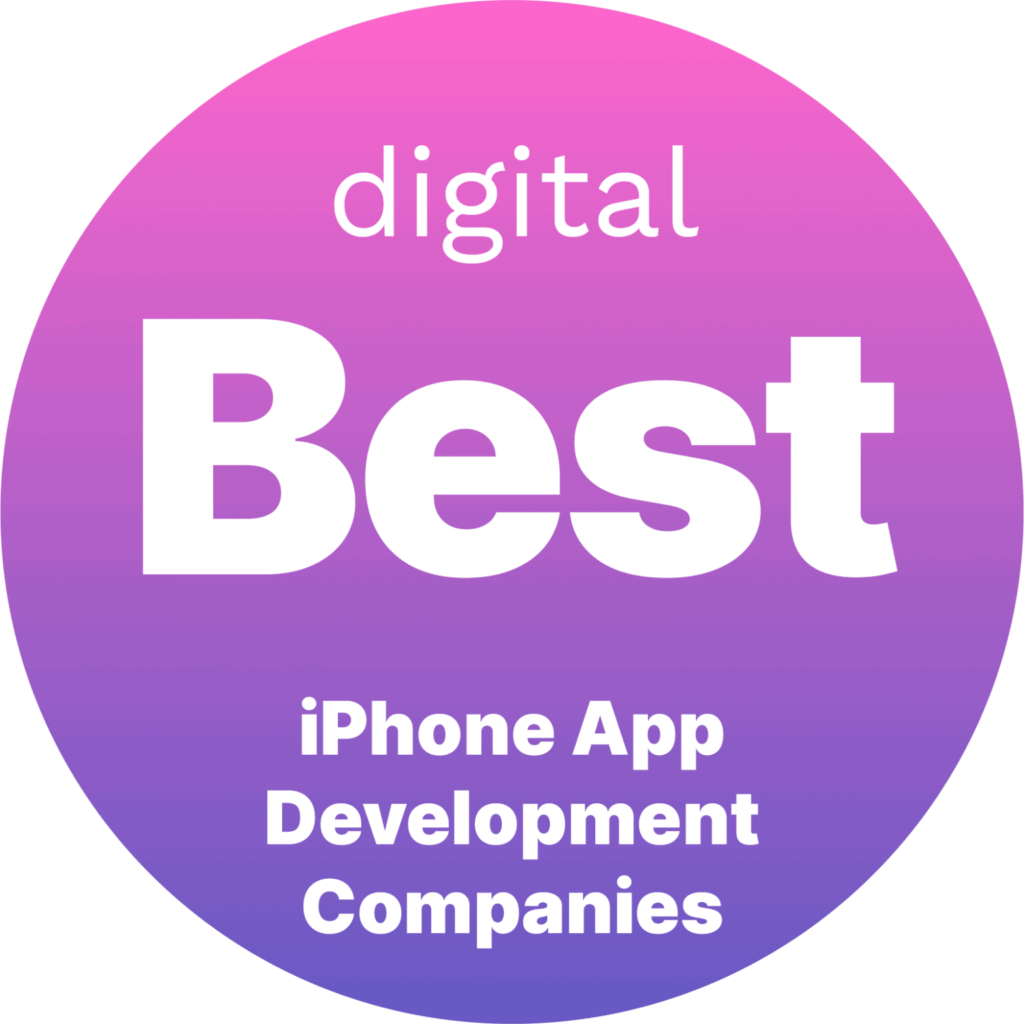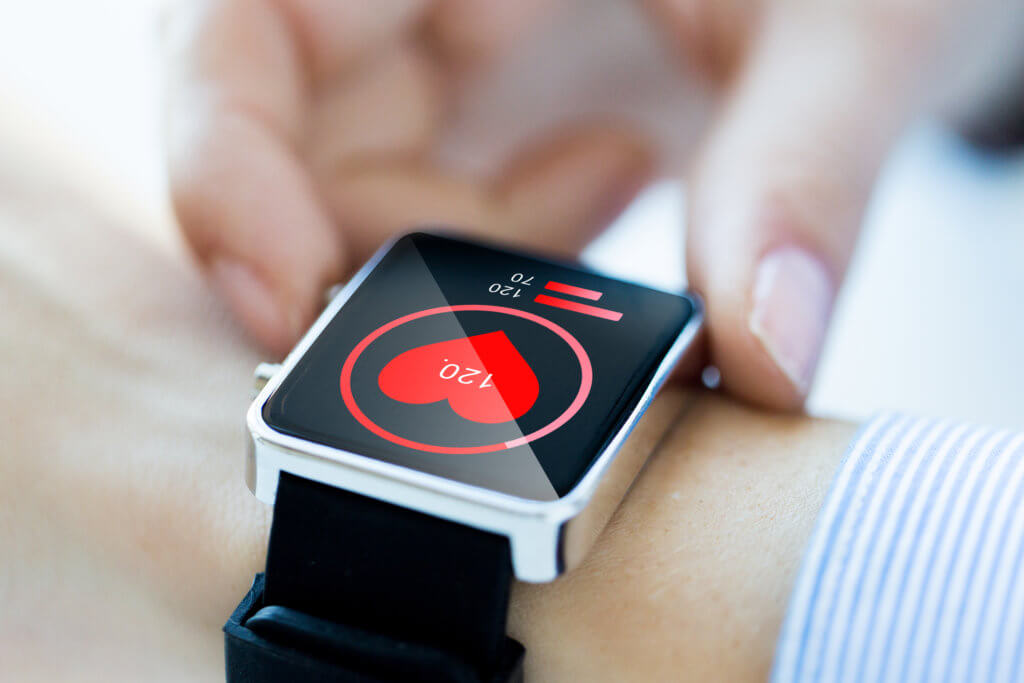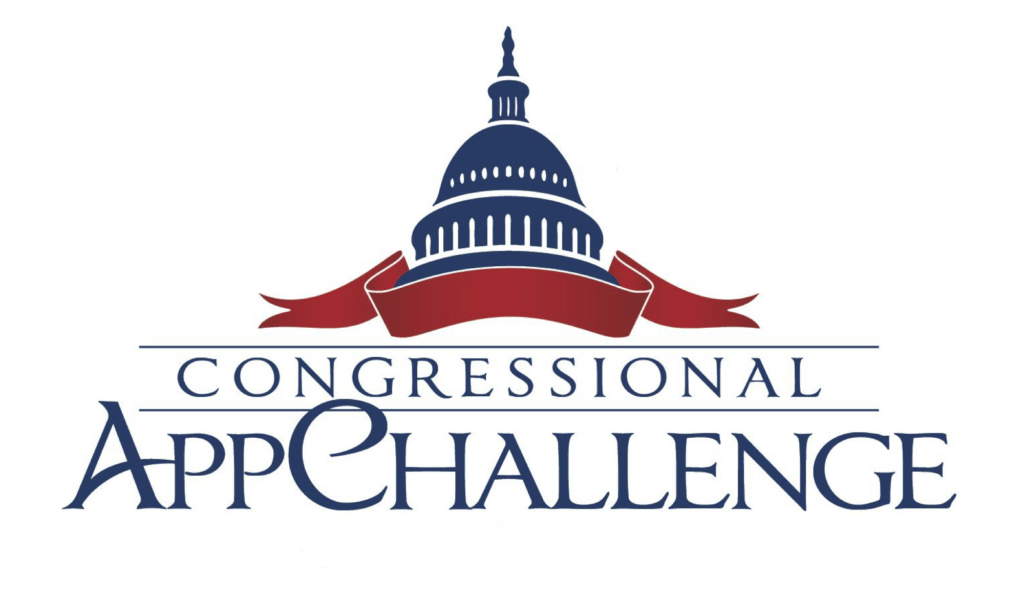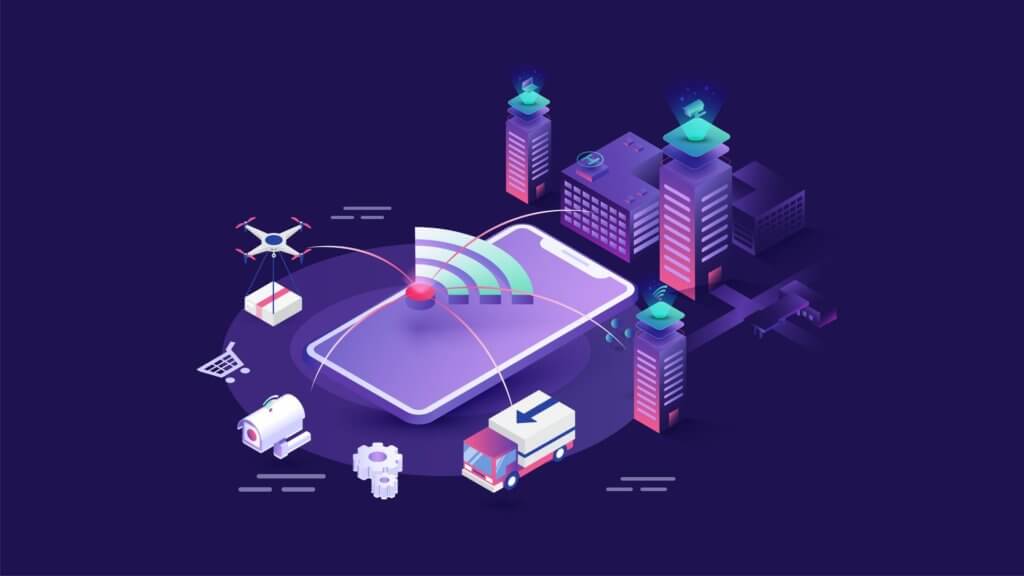What Businesses Need to Prepare Before Starting a Mobile App Development Project
April 29, 2025 - 1 hours readArticle summary:
- Start with Strategy: Define a clear app vision aligned with your business goals. Conduct market and user research to validate needs and set success metrics before any coding begins.
- Plan Resources & Tech: Establish your budget, timeline, and team early. Decide on the right technology stack (native vs. cross-platform, iOS vs. Android) that fits your app’s requirements and future scalability. Ensure you account for security, compliance, and any industry regulations from day one.
- Choose the Right Partner: If you lack in-house capabilities, find a reputable mobile app development partner. Look for a team that understands your vision, has relevant experience, and can guide you through a smooth development process from planning to launch.

Developing a mobile app isn’t just a tech project—it’s a strategic business initiative. Rushing into development without proper preparation can lead to budget overruns, missed deadlines, or even project failure. In fact, research shows that a lack of clear goals and poor planning are among the top reasons many software projects fall short. With the mobile app market more competitive than ever (millions of apps and counting on the app stores), taking the time to prepare thoroughly can mean the difference between an app that succeeds and one that fizzles out.
Businesses of all sizes—startups, SMEs, and enterprises alike—need to approach mobile app development with a solid game plan. This means defining what you want to achieve, understanding your users, allocating the right resources, picking suitable technology, ensuring compliance, and often, partnering with the right experts.
In this blog, we’ll walk through the key steps and considerations to address before you dive into developing a mobile app. From crystallizing your concept and goals to sorting out the budget and technical choices, these preparatory steps will set your project up for success. By the end, you’ll know how to strategically plan your app development endeavor and avoid common pitfalls. Let’s get started!
1. Define Your Strategic Goals and Vision
Before writing a single line of code, clarify what you want your app to accomplish. This might sound obvious, but it’s a step too often glossed over. Start by asking: How does this app align with our overall business strategy? Identify the core problem or need the app will address for your customers or internal users.
Begin with a clear vision statement for the app. For example, “This app will streamline our customer’s ordering process and increase repeat purchases by providing a personalized mobile shopping experience.” From this vision, derive specific, measurable objectives. These could include targets like user acquisition numbers, engagement rates, revenue goals, or efficiency improvements. Defining success metrics at the outset gives you a way to measure ROI later. It also helps keep the project focused; as development progresses, you can evaluate feature ideas by whether they support the primary goals or not.
Crystallizing your goals is not just a planning exercise—it’s a survival tactic. Studies by the Project Management Institute have found that unclear objectives are a leading cause of project failure. In other words, if your team and stakeholders aren’t on the same page about what the app should achieve, the project is at risk before it even begins. Take the time to get buy-in on the app’s purpose from key stakeholders (executives, product owners, department heads). This may involve workshops or meetings to define requirements and set priorities. A unified strategic vision ensures everyone moves in the same direction once development is underway.
Additionally, consider how the app will create value for your business. Is it meant to drive revenue directly (e.g. through in-app purchases or new sales channels)? Enhance customer loyalty and retention? Improve internal productivity? Articulating the expected business benefits will help justify the project’s investment and guide decision-making throughout development. It’s also wise to think about your monetization or ROI model early on. For a startup, that might mean deciding if the app will be free, ad-supported, subscription-based, etc. An enterprise developing an internal app might define ROI in terms of cost savings or performance improvements.
Finally, document your findings in a brief app strategy plan. Include the app’s mission, target audience, core features (as known so far), and success criteria. This doesn’t have to be a 50-page document—concise is often better. The point is to have a reference that keeps the project grounded in strategic intent. By solidifying your goals and vision up front, you create a north star for your project. All other preparation steps, from resource planning to choosing technology, will tie back to supporting this vision.
2. Understand Your Users and Market Needs
With your high-level goals defined, the next preparatory step is deep research into your target users and market. No matter how innovative you think your app idea is, it needs to fulfill a genuine user need or desire to succeed. In fact, an analysis by CB Insights found that “no market need” is the single biggest reason startups fail. Businesses can avoid this fate by rigorously validating their app concept through research.
Start with market research: examine the industry or domain your app will operate in. Who are your competitors (direct or indirect)? What solutions already exist, and what are their strengths or shortcomings? This analysis will help you identify gaps your app could fill or unique value you can offer to stand out. It’s also useful for setting realistic expectations; if you discover, say, ten other apps already doing something similar, you’ll know that differentiation and superior execution will be critical. On the other hand, if your idea is truly novel, you’ll want to verify that the problem it solves is something users actively want solved.
 Next, define your target audience and user personas. Who exactly is this app for? The more specific you can get, the better. For example, instead of “our app is for busy professionals,” you might identify a persona like “Marketing managers in mid-sized firms who need on-the-go access to campaign analytics.” Give your personas names, job roles, preferences, and pain points. Understanding the daily challenges and motivations of your intended users helps tailor your app’s features and design to them. It will also influence choices like which platform to start with (if your target users overwhelmingly use Android, that’s a key insight for development).
Next, define your target audience and user personas. Who exactly is this app for? The more specific you can get, the better. For example, instead of “our app is for busy professionals,” you might identify a persona like “Marketing managers in mid-sized firms who need on-the-go access to campaign analytics.” Give your personas names, job roles, preferences, and pain points. Understanding the daily challenges and motivations of your intended users helps tailor your app’s features and design to them. It will also influence choices like which platform to start with (if your target users overwhelmingly use Android, that’s a key insight for development).
Engaging in customer discovery at this stage is immensely valuable. This can include surveys, interviews, focus groups, or simply informal conversations with potential users. Present your app concept (or problem statement) to them and listen to their feedback. What features do they care about most? What frustrations do they have with current solutions? You might discover that some assumptions in your idea are off-base, allowing you to pivot early before resources are spent on development. Even if you’re an enterprise building an internal app for employees, treat them as your “users” and gather their input on what they need. Early user research ensures you’re building an app that truly resonates with its audience.
Another part of understanding your market is assessing feasibility and demand. If you’re a startup, this might involve testing a minimum viable concept. For example, building a simple prototype or landing page and gauging interest (sign-ups, feedback, etc.) can validate that people will actually use your app. For established businesses, you might analyze data from existing products or services for clues. Perhaps your website analytics show a majority of visitors are on mobile devices—supporting the case for a mobile app. Or customer support inquiries might reveal a pain point that an app could solve. Use all available data to inform your app’s direction.
Keep an eye on industry trends and regulations in your market research as well. Are there emerging technologies your app could leverage (like AI, AR/VR, or IoT)? Are there new regulations (for example, data privacy laws) that could impact how you design the app? Understanding the broader landscape will help you future-proof your plan.
By the end of this research phase, you should be able to clearly answer: Who is this app for? What problem does it solve for them? Why would they use it instead of alternatives? If you have strong, evidence-backed answers to those questions, you’re on the right track. All of this insight will feed directly into making smarter decisions about features, design, and even marketing down the line. In short, knowing your user is prerequisite to building a successful app. It ensures you’re not developing in a vacuum but rather creating something that people genuinely want and need.
3. Plan Your Budget, Team, and Timeline
With your goals and market understanding in place, it’s time to get practical: what resources will you need to turn this idea into a reality? App development is a significant investment, so careful resource planning before starting can save you from headaches later. There are a few key aspects to consider: budget, human resources (team/expertise), and project timeline.
Budgeting
Determine how much you are willing and able to spend on the mobile app project. Costs can vary widely depending on the app’s complexity, the platform(s) targeted, and who is doing the development. A simple app developed by a small team can cost tens of thousands of dollars, whereas a complex enterprise app or a consumer app at scale can run into the hundreds of thousands (or more). If you’re a startup or SME, your budget might be constrained, so prioritizing features for an MVP (Minimum Viable Product) release is crucial (we’ll touch on scope shortly). Enterprises may have larger budgets but also more stakeholders and integration needs which can drive up costs.
When planning your budget, account for all phases of the project: not just the core development, but also design (UI/UX), testing/QA, any needed hardware or software licenses, marketing (if it’s a public app), and a buffer for unforeseen expenses. It’s wise to include a contingency—many project managers recommend setting aside an extra 10-20% of the budget for surprises or scope changes. This cushion helps prevent panicking for additional funds if something takes longer than expected. Also consider the ongoing costs beyond launch: server hosting, maintenance updates, customer support, etc. Stakeholders should recognize that a mobile app is not a one-and-done expense; it will require some level of continuous investment.
Assemble the Right Team
Next, think about who will actually build and manage the project. Do you have an in-house development team with the necessary skills? If so, ensure they have the capacity to take on the new project in addition to their regular duties. Often, businesses underestimate the workload of app development—your team will need to handle front-end development, back-end development (if the app requires a server or cloud component), testing, and more.
It’s not uncommon to involve specialists like a UX/UI designer for the interface and user experience, or a business analyst to help translate business requirements into technical specs. If these roles and skills aren’t available internally, you’ll need to consider hiring or outsourcing (more on choosing external partners in a later section).
For many startups and even SMEs, outsourcing development is a practical route to get the necessary expertise on board. Recent industry surveys show that a large share of companies outsource at least part of their app development efforts. Whether you tap a freelancer, a development agency, or a specialized app development company as a partner, you should allocate time to vet their qualifications (portfolio, references, etc.) and include their costs in your budget.
Remember to budget not just for coding, but also for crucial preparatory work like planning and design. Professional developers or agencies will often work with you in a discovery phase (sometimes for a consulting fee) to refine requirements and create wireframes/prototypes before the full build, which is a worthwhile investment.
Timeline and Project Plan
Determine a realistic timeline for the project, including key milestones. When do you hope to launch the app? Working backward from a target launch date, set major phases such as discovery/research, design, development, testing, and deployment. Keep in mind that quality app development takes time—often several months for even a moderately complex app. Crunching a six-month project into three months, for instance, is a recipe for stress and subpar results.
Be especially cautious about scope creep: as enthusiasm for the app builds, stakeholders might keep adding feature requests. It’s important to prioritize features (based on your earlier research and goals) and possibly phase the development. Often a “release early, then iterate” approach works well: build a version 1.0 with core functionality, launch it, and then add enhancements in subsequent updates. This means your timeline should incorporate not just the first launch but also plans for post-launch improvements.
In planning your timeline, also consider any external dependencies or timing factors. For example, is there a seasonal market window for your app (like an app that should be out before the holiday shopping season)? Or do you need to coordinate with another product launch or marketing campaign? Such factors might impose hard deadlines or influence when certain milestones must be hit. Additionally, if your app must undergo approvals (for instance, enterprise security reviews or app store submissions), build in time for those processes.
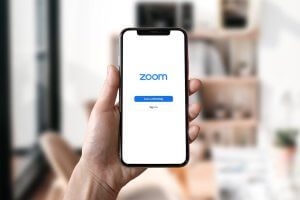 Risk management is another part of resource planning. Identify potential risks that could derail your timeline or budget, and plan how to mitigate them. A common risk in app projects is underestimating complexity—perhaps integrating with a third-party API is harder than expected, or a critical feature is technically challenging. By acknowledging these upfront, you can allocate extra time or budget buffer to handle them. It’s also prudent to set up a project management framework early (whether Agile sprints, or a traditional Gantt chart plan, etc.) to keep the project on track. Many successful app projects use Agile methodologies, allowing for iterative development and flexibility if requirements change. In that case, you might plan resources on a per-sprint basis, but you should still have an overarching roadmap.
Risk management is another part of resource planning. Identify potential risks that could derail your timeline or budget, and plan how to mitigate them. A common risk in app projects is underestimating complexity—perhaps integrating with a third-party API is harder than expected, or a critical feature is technically challenging. By acknowledging these upfront, you can allocate extra time or budget buffer to handle them. It’s also prudent to set up a project management framework early (whether Agile sprints, or a traditional Gantt chart plan, etc.) to keep the project on track. Many successful app projects use Agile methodologies, allowing for iterative development and flexibility if requirements change. In that case, you might plan resources on a per-sprint basis, but you should still have an overarching roadmap.
To summarize this section: secure the necessary resources before you start. Ensure the project has a realistic budget approved, the right people involved, and a well-thought-out timeline. By doing this groundwork, you reduce the chances of nasty surprises like running out of funds halfway through development or missing a crucial deadline. Proper resource allocation is the backbone of your project’s execution plan.
4. Determine the Right Tech Stack and Platform
One of the most important technical decisions you’ll make upfront is choosing which technology stack and platforms to use for your mobile app. These choices will affect development cost, timeline, app performance, and even the hiring/outsourcing of developers. Preparing for a mobile app project means evaluating your options and selecting the approach that best aligns with your goals and resources.
Choose Your Platform(s)
Will you develop for iOS, Android, or both? This depends largely on your target audience (which you identified earlier). If your user research shows that the majority of prospective users are on one platform, you might start there to focus resources. However, most consumer-facing apps eventually need to be on both Apple’s App Store and Google Play to maximize reach. Many businesses opt to build for both from the outset if budget permits, but this roughly doubles the native development effort if you build separately for each.
There is also the consideration of web or progressive web apps (PWA) if you want to create a mobile-friendly web application as an alternative or precursor to a full native app. Each platform choice has implications: for example, iOS users tend to spend more on apps on average, while Android has a larger global user base. If you’re targeting enterprise or internal users, you might have a known device policy (perhaps your company uses only iPhones, simplifying the decision to iOS). Evaluate these factors and decide where to launch first and whether a staggered approach (one platform first, then the next) makes sense for your strategy.
Native vs. Cross-Platform Development
The next consideration is how you will build the app technically. Native development means using platform-specific languages and tools (Swift/Objective-C for iOS, Kotlin/Java for Android). This typically yields the best performance and access to all device features. If top-notch performance or complex native features (like advanced graphics, AR, etc.) are crucial, native may be the way to go. However, native apps require separate codebases for iOS and Android, which means higher development and maintenance effort.
On the other hand, cross-platform frameworks allow you to write one codebase that can deploy to both iOS and Android. Popular technologies in this realm include React Native, Flutter, and others. Using cross-platform tools can often reduce development time and cost, since you’re effectively building the app once for both platforms. Many startups and SMEs choose this route to achieve a presence on both app stores quickly and more affordably.
The trade-offs are that some cross-platform solutions might not fully support every native feature or could have slight performance overhead compared to true native apps. That said, frameworks like Flutter and React Native have matured greatly – companies like Facebook, Pinterest, and Alibaba have used them in high-traffic apps, indicating their viability.
During your preparation, discuss with your technical team or potential development partner which approach suits the project. Often, the decision comes down to the specifics of the app: for example, a graphically intensive mobile game might lean native, whereas a standard data-driven app (think e-commerce or social feed app) can work excellently with cross-platform tech.
Backend and APIs
Another part of the tech stack is the backend infrastructure. Does your mobile app need a server or cloud component? Most apps do, especially if they require user authentication, store user data, or share data across users. Early on, decide whether you will build a custom backend, use MBaaS (Mobile-Backend-as-a-Service) platforms, or leverage an existing server from your business. For instance, if you’re extending an existing web service into a mobile app, you might already have APIs that the app can use.
Ensure that your backend can handle the projected load of the mobile users, and consider scalability (if you expect user numbers to grow, cloud services that auto-scale might be beneficial). Also plan for any integrations: if the app needs to interface with third-party services (payment gateways, analytics platforms, etc.), list those out in advance. This will guide development and possibly influence tech stack choices (for example, some third-party SDKs might favor one platform or framework).
Development Tools and Environment
Preparing your development approach also means setting up the right tools. If going native, ensure you have the latest Xcode (for iOS) or Android Studio and that your developers are familiar with them. If cross-platform, you might need frameworks and related IDE plugins. Will you use any specific libraries or software kits (for example, a UI framework, or a game engine like Unity if it’s a game app)? Identify these early so that your team can ramp up on them. Additionally, decide on the project’s methodology and tools: for instance, using a code repository (like GitHub or Bitbucket) is a must; you might also set up a continuous integration pipeline to automate builds and tests, which is good to plan from the start.
Architecture and Scalability
At the preparation stage, it’s wise to think about the app’s architecture in broad strokes. Will it be a monolithic app or modular? How will you separate concerns between front-end (the app UI) and back-end (server logic)? These considerations tie into choosing a tech stack. For example, if you expect the app to evolve rapidly with many features, adopting a modular architecture (like MVVM or Clean Architecture on Android, MVC on iOS, etc.) can make future changes easier.
If your app will handle sensitive data or heavy traffic, planning for robust security and scalability is key. This could influence using certain cloud services, databases, or containerization for your back-end services. While you don’t need the entire architecture diagram finalized before starting development (some of that will happen during the design phase), having a clear concept of how the system will be structured is part of good preparation.
In summary, selecting the right tech stack comes down to aligning technical choices with your project’s needs and constraints. A startup on a lean budget might choose a cross-platform approach to hit both iOS and Android quickly, whereas an enterprise might opt for native apps to leverage every platform feature and integrate tightly with existing systems.
There’s no one-size-fits-all answer, but making these decisions deliberately and early will guide your development process smoothly. It also ensures that when you engage developers or a development partner, you have a clear direction on the technical approach, which saves time in execution. Remember: the technology should serve the app’s goals, not the other way around—so choose a stack that empowers your team to deliver on the app’s promise efficiently.
5. Address Security, Legal, and Compliance Requirements
Before you start building your app, it’s crucial to consider the legal and regulatory groundwork. Mobile apps often deal with personal data, financial transactions, or other sensitive information, and there may be laws governing how you must handle that. Additionally, different industries have their own compliance standards. Preparing for these requirements upfront will help you avoid costly rework or penalties later. In this section, we’ll cover privacy, security, and other compliance factors to plan for.
Data Privacy Regulations
Nearly every business today must contend with data protection laws. Depending on your audience, you may need to comply with regulations such as the GDPR (General Data Protection Regulation in Europe), CCPA (California Consumer Privacy Act), or other regional data privacy laws. These regulations dictate how you collect, store, and use personal data. For example, GDPR requires explicit user consent for collecting personal data and gives users rights over their data (like the ability to request deletion). If your app will collect personal information (even as basic as names and emails) or usage data, you should design with privacy in mind from the start.
This means things like: building transparent user consent flows (e.g., asking permission for accessing location or contacts and explaining why), including a privacy policy accessible in-app, and ensuring you only collect data that is truly necessary for the app’s functionality. It’s much easier to bake these considerations into the app’s design upfront than to retrofit them after development. If you’re unsure about the laws that apply, consulting a legal expert during the planning phase is wise. Large enterprises likely have legal teams for this, whereas startups might use external counsel or resources to guide compliance planning.
Industry-Specific Compliance
Think about the industry your app operates in. For instance, a healthcare app that handles personal health information must be HIPAA-compliant in the United States. That entails implementing strict data encryption, access controls, and other safeguards for any protected health information. If you’re building a mobile health solution, you’ll want to plan for those technical requirements (like encryption of data at rest and in transit) from day one. Similarly, a fintech or banking app will need to comply with financial regulations and security standards (such as PCI DSS if processing payments).
An app aimed at children may need to comply with COPPA (Children’s Online Privacy Protection Act). And nearly any app with users worldwide should consider accessibility standards (like ADA or WCAG guidelines) to accommodate users with disabilities. List out any such compliance frameworks that apply to your app. This will influence both design and development. For example, planning for HIPAA compliance might affect your choice of backend services or how you authenticate users. If you’re not sure what applies, again, legal consultation or industry research at the outset can clarify the must-haves.
Security Planning
Even if specific regulations don’t mandate it, security is a non-negotiable element of modern app development. A breach or data leak can ruin user trust and incur huge costs. As you prepare for the project, conduct a basic threat assessment: What kinds of data will the app handle? What would be the impact if that data were compromised? This will guide you in deciding security measures.
Common preparations include: enforcing strong authentication (possibly integrating biometrics or two-factor authentication for sensitive apps), deciding to encrypt data stored on the device (especially for Android, where an unlocked phone could be more easily inspected), and using secure communication protocols (HTTPS for all server communication).
If your app involves user accounts, plan how you will securely manage credentials – you might use industry-standard solutions or services (for example, OAuth tokens, or services like AWS Cognito, etc.). Additionally, consider app store requirements: both Apple and Google have security and privacy standards that your app must meet, and Apple in particular will reject apps that don’t properly handle user data or request permissions in a user-friendly way.
Intellectual Property and Legal Setup
On the legal side, also think about intellectual property (IP) and contractual arrangements before starting development. Ensure you have rights to any content or data you plan to use. For example, if your app will use third-party data or images, have you licensed them appropriately? If you’re hiring an outside developer or agency, make sure you have a clear contract stating that you will own the source code and IP of the app after development (unless a different arrangement is intended).
It’s not uncommon for businesses to overlook this and face complications later regarding who owns the finished product. Likewise, if the app’s idea is unique and potentially patentable, you might consult with a patent attorney early (though software patents are tricky, it’s part of the business consideration).
At minimum, plan to trademark your app’s name or ensure it’s not infringing on someone else’s trademark. The last thing you want is to build an app called X only to receive a cease-and-desist letter after launch because someone else has rights to that name in the software space.
Testing and Compliance Verification
Incorporate compliance checkpoints in your project plan. For instance, schedule a security audit or code review focusing on security best practices. If building a healthcare app, you might plan for a HIPAA compliance review as part of testing. It’s much better to catch and fix compliance issues before launch rather than dealing with them post-release (or worse, dealing with violations). For enterprise apps, internal IT security teams might need to sign off on the app’s security posture.
If you know that in advance, engage them early so they can guide requirements (e.g., they may mandate the use of certain encryption standards or forbid using certain third-party services). This proactive approach ensures you won’t be in a last-minute scramble to address a security team’s concerns that weren’t considered from the start.
To illustrate why all this matters: consider that penalties for non-compliance can be severe. Data breaches or legal violations can lead to hefty fines and damage your brand. For example, companies that violate HIPAA can face fines in the millions of dollars, and GDPR fines can be even more catastrophic (up to 4% of annual global turnover). While the goal isn’t to scare, these realities underscore why legal and compliance preparation is as important as technical preparation.
By handling security and compliance requirements early in the project, you protect your users and your business, and you pave the way for a smoother development (developers appreciate having clear security guidelines up front). Ultimately, treating compliance as a foundational part of your app project planning will save time, money, and stress, allowing you to focus on building a great product rather than firefighting legal issues later.
6. Choose the Right App Development Partner
Finally, one of the biggest decisions before kicking off your mobile app project is who will actually build it. If you have a competent in-house development team, you may choose to handle it internally. But many businesses, especially those for whom app development is not a core activity, opt to partner with a specialized app development company or agency.
In fact, outsourcing parts of app development is extremely common — surveys indicate that well over half of organizations outsource app development in some capacity. Whether you’re a startup without a technical co-founder or an enterprise looking to augment your team, selecting the right development partner is a critical preparation step that will heavily influence your project’s outcome.
Assess Your In-House Capabilities
Start by honestly evaluating what skills and bandwidth you have internally. Building a mobile app requires not just coding ability in the chosen platform/stack, but also UX/UI design, product management, testing, and often, backend/cloud expertise. Do you have developers who are experienced in mobile technologies?
If your company’s developers are mostly web or desktop-focused, they may not be familiar with mobile frameworks or app store processes. Additionally, do they have time to dedicate to this project alongside their other duties? If an internal team is available and skilled, you might still consider bringing on contractors or consultants to fill any gaps (e.g., hire a freelance mobile UX designer to work with your team).
When Looking Externally: If you decide to work with an outside app development firm (like an agency or dedicated development shop), it’s important to do due diligence. Treat it like hiring an employee, but even more scrutinously since this is a whole team you’re bringing in. Here are some factors to consider when choosing a development partner:
- Relevant Experience: Look for a partner with a track record of successful projects similar to yours. Check their portfolio for apps in your industry or with comparable features. For example, if you’re building an mHealth app, you’d want a partner who understands healthcare and has built HIPAA-compliant apps before. (At Dogtown Media, for instance, our healthcare app development expertise means we’re familiar with medical compliance and design for patient engagement.) Similarly, if your app requires cutting-edge tech like AI or IoT integration, find a firm that highlights those competencies.
- Client References and Reviews: Don’t just take the sales pitch at face value. Look up reviews (platforms like Clutch.co aggregate reviews for development agencies). Ask the partner for client references and actually contact a couple of them to ask about their experience. Were they happy with the communication, the quality of work, the adherence to timelines and budgets? A reputable development company will be proud to connect you with past clients.
- Communication and Culture Fit: Building an app is a collaborative process. You want a partner who communicates clearly, responds promptly, and understands your vision. In your initial conversations or consultation, pay attention to how well they listen and whether they ask smart questions. A good development partner will often provide insights and suggestions, not just passively take orders. They should feel like an extension of your team. Also consider time zone and language if you’re looking at overseas developers – make sure you have an overlap for meetings or a plan for communication that won’t slow the project. Many businesses prefer a partner in the same region for easier collaboration, while others successfully work with offshore teams; the key is ensuring strong communication channels.
- Development Process and Transparency: Inquire about how they manage projects. Do they use Agile Scrum with regular sprints and demos? Will you have access to project management tools or frequent updates to see progress? Clarity on this upfront is important. You’ll want to know how often you can expect updates, how they handle feedback or change requests, and what testing procedures they follow. A professional partner should have a well-defined process. For example, they might start with a discovery/workshop phase (to refine requirements), then move into design prototypes, then iterative development with testing, etc. They should also discuss how they ensure quality (QA testing, bug fixing policies, etc.). If a company is vague about their process or hesitant to give you visibility, consider that a red flag.
- Budget and Contract: Get detailed proposals from a few candidates. Be wary of choosing purely on price—ultra-cheap quotes could mean inexperience or cutting corners, which can cost more in the long run. Instead, look for value and alignment. The proposal should clearly outline scope, deliverables, timeline, and cost. Make sure you understand how they handle changes in scope (it’s rare that a project doesn’t evolve at all). Some partners work on a fixed-price model for a defined scope, while others operate on time-and-materials (hourly billing with flexibility). Each has pros and cons; fixed price gives certainty but can require more upfront definition and potentially change orders if you adjust scope, whereas T&M can adapt as you go but needs trust and diligence to keep within budget. Choose what you’re comfortable with and ensure the contract covers intellectual property ownership, confidentiality (likely you’ll sign an NDA with them), and post-launch support or warranty. Many agencies offer a period of free bug-fixing support after launch, for instance — that’s good to have in writing.
- Post-Launch Support and Partnership: Ideally, you’re not just hiring coders; you’re engaging a long-term partner who can support your app after its initial launch. Ask about their ability to provide maintenance, updates, and perhaps new feature development down the line. Do they offer ongoing service agreements? If your app takes off, you’ll want the same team available to keep improving it (unless you plan to transition to in-house team maintenance later). Knowing this in advance can influence your choice. An established development studio with multiple teams might scale with you, whereas a small freelance team might not handle a rapid expansion of needs.
In making the decision, weigh the options carefully. If you go in-house, perhaps start with a pilot or proof-of-concept to gauge if your team can deliver. If you go with a partner, start conversations early — many top agencies’ calendars fill up, and you might need to reserve a slot or wait for their availability.
One approach some companies take is a hybrid model: use a partner to jumpstart development (especially for initial design and development of core features) while having your internal team shadow them or take over gradually. This can work well if you plan to own the project long-term but need immediate momentum and training.
The bottom line is, choosing the right people to build your app is as important as having the right idea. A skilled and trustworthy development partner will not only write quality code but also guide you through best practices, help refine your ideas, and proactively solve problems. On the flip side, a poor choice can lead to miscommunication, delays, or a product that doesn’t meet your expectations. Take the selection process seriously: review portfolios, hop on calls, maybe even start with a small paid test project or consultation before fully committing. Once you’ve selected your development partner (or solidified your internal team), you can move forward into development with confidence, knowing that everyone involved is prepared and on the same page.
Frequently Asked Questions (FAQs)
Q1: How long does it typically take to develop a mobile app from start to finish?
A: The timeline for mobile app development can vary widely depending on the complexity of the app and the amount of preparation done beforehand. Generally, for a moderately complex app, you might expect around 4-6 months from project kickoff to a Version 1.0 launch. This includes initial planning, design, development, testing, and deployment. Simpler apps (with basic features and one platform) might be done in 2-3 months, whereas very complex or feature-rich applications (or those needing to launch on multiple platforms at once) can take 9+ months.
Keep in mind that these timelines assume you’ve done the proper groundwork (requirements gathering, etc.) up front. Rushing or trying to skip steps often leads to delays later. It’s also worth noting that development doesn’t “end” at launch—after releasing, you’ll likely spend additional time on updates, improvements, and maintenance. Using an Agile approach with iterative releases can get a basic product out faster, then you continue adding features over time. The key is to set a realistic schedule based on the scope of your app and to buffer a little extra time for unforeseen challenges, especially if this is your first app project.
Q2: How do I estimate a reasonable budget for my app project?
A: Estimating budget starts with understanding your app’s requirements and the resources needed (developers, designers, etc.). A good practice is to break down the project into major components or features and get rough time estimates for each from experienced developers or firms. Then, multiply that by an assumed hourly rate (plus add costs for design work, project management, testing, etc.).
For example, if you think an app might take 1000 hours of total work and you use an average blended rate of $50/hour, that’s about $50,000. Keep in mind rates vary by region and expertise—outsourcing overseas might have lower hourly rates, whereas top agencies in North America or Europe can charge $100-$200/hour. Another method is to solicit proposals/quotes from a few development partners; even if you plan to develop in-house, their quotes can give you a ballpark.
Remember to include additional costs such as app store developer fees (small annual fees), any third-party services or APIs your app uses (some have subscription costs), testing devices, and a contingency (usually 10-15% of the total) for unexpected needs. If your app requires ongoing cloud services (servers, databases), factor in those monthly costs too. In summary, do as detailed a breakdown as you can, get expert input if possible, and always err on the side of a higher budget to ensure you’re covered.
Q3: Should we build our app for iOS or Android first?
A: This depends on your target audience and strategic goals. If a large majority of your intended users are on one platform, it can make sense to start there for an initial launch. For instance, many startups in the U.S. choose iOS first because historically iOS users have higher engagement or spending in certain segments, and it’s a bit simpler to focus on one device type (iPhones) initially.
Android, however, has a greater global market share and might be preferable if your app targets regions or demographics where Android is dominant. Another consideration is the nature of the app: if it’s for internal enterprise use and all your employees use company-issued iPhones, the decision is clear. On the other hand, if broad consumer reach is a goal and resources allow, developing for both iOS and Android concurrently will maximize your user base. Using cross-platform development frameworks (like Flutter or React Native) is one way to target both with a single codebase, which many businesses do to avoid choosing one platform over the other.
However, even with cross-platform, you’ll still need to handle platform-specific testing and adjustments. In short, evaluate your user research data—go where your users are. If it’s roughly equal or you’re unsure, you might lean towards a dual-platform launch or choose the platform that aligns best with your initial marketing plan. Also consider feedback loops: launching on one platform first can let you gather user feedback and refine the app, then you incorporate those learnings into the second platform’s development.
Q4: What’s the difference between native and cross-platform app development, and which should we choose?
A: Native development means building separate apps for each platform using the official languages and tools (Swift/Objective-C for iOS, Kotlin/Java for Android). Native apps generally have the best performance and full access to all device features and OS updates. They tend to “feel” very natural to each platform (in terms of UI style and navigation). If your app demands top-tier performance (like a high-end 3D game or AR app) or uses very platform-specific features, native is often the best choice. The downside is you essentially maintain two codebases if you want both iOS and Android, which requires more time and expense.
Cross-platform development uses a single technology stack to deploy to multiple platforms. Examples include React Native, Flutter, Xamarin, etc. You write one codebase (in JavaScript, Dart, C#, or others depending on the framework) and it can run on both iOS and Android (and sometimes other platforms like web or desktop). The advantage is significant reuse of code, which can mean faster development and easier maintenance (one team can handle both platforms together). Modern cross-platform frameworks can achieve near-native performance and can access most native device APIs, but occasionally you might need to write some platform-specific code for certain features. The user experience can be made very close to native, though a highly trained eye might notice minor differences in some UI behaviors or transitions. Many popular apps use cross-platform tech under the hood successfully.
Which to choose comes down to your priorities: If you need to launch quickly on both platforms with limited resources, cross-platform is very appealing. If you have strong iOS and Android teams and want to optimize every detail for each platform, native might be preferred. Another factor is future maintenance and hiring – if you go native, you might need developers specialized in each, whereas cross-platform allows a unified team. Some teams even start with cross-platform to get off the ground, then later might rebuild certain components natively if needed (or vice versa). In summary, for most typical business apps, cross-platform development offers an efficient balance of quality and cost-efficiency. Native is a good choice when performance or platform-specific polish is paramount and you have the budget/time to support it. Discuss this with your development team/partner; they’ll weigh the pros and cons with respect to your specific app’s requirements.
Q5: How can I ensure my app meets all legal and compliance requirements?
A: Ensuring compliance starts at the planning stage. First, identify which laws or regulations apply to your app. Key areas to consider are data privacy (e.g., GDPR, CCPA), data security (industry standards or local laws), and any sector-specific regulations (like HIPAA for health data, FINRA/SEC rules for financial services, etc.). Once you have a list, you should integrate their requirements into your project requirements. For instance, if GDPR applies, make sure to include a user consent flow for data usage, the ability for users to request data deletion, etc., in the app’s feature list. If you’re in healthcare, plan for encryption of data both in transit and at rest, and perhaps consult a healthcare compliance expert to review your designs. It’s often a good idea to have a legal advisor or compliance specialist involved at least as a reviewer early on to catch any issues. They can provide guidelines for your developers – for example, “we need to ensure no personal data is stored without encryption on the device,” or “we must log user consent actions and keep that record.”
During development, conduct regular audits or check-ins specifically for compliance. Use any available tools or checklists; for example, the App Store now requires privacy “nutrition labels” – make sure you know what data your app collects so you can accurately report it. For security, you might have a third-party do a penetration test or code review focused on security before launch. Also ensure your team stays updated on platform guidelines (Apple and Google each have review guidelines that include sections on privacy and security). They can reject apps that violate those, which in a way enforces a baseline of compliance (like requiring a privacy policy for apps that collect user data).
In short, treat compliance as an integral part of development, not an afterthought. Document how your app complies (this is useful internally and in case you ever need to demonstrate compliance). If you’re using a development partner, choose one experienced in your industry—they are more likely to be familiar with the necessary regulations (for example, an agency that has built banking apps will know about KYC/AML compliance steps). Finally, once the app is live, keep an eye on any law changes or new guidance in your industry and update the app if needed. Compliance is an ongoing process, but starting with a solid foundation will make it much easier to manage in the long run.
Q6: What should I look for in a mobile app development partner or agency?
A: When selecting an app development partner, you should evaluate them on several key criteria:
- Expertise and Experience: Review their portfolio of past apps. Do they have experience with the type of app you want to build or the technologies you plan to use? Relevant domain experience can save a lot of time (they won’t have a learning curve about your industry’s nuances). Also check how long they’ve been in business and what kind of projects they typically handle (startup apps, enterprise solutions, etc.), ensuring it aligns with your project’s scale.
- Client Feedback: Look for testimonials, case studies, or third-party reviews. Consistent positive feedback on things like reliability, communication, and quality is a good sign. Don’t hesitate to ask the agency for references so you can speak directly to a prior client about their experience.
- Communication and Process: A good development firm will be transparent and communicative. In initial discussions, gauge how well they understand your requirements and how proactive they are in suggesting ideas or identifying potential challenges. Ask about their development process – do they use Agile? How do they handle progress updates and demos? Ideally, you’ll want a partner who provides regular updates (e.g., weekly sprint reviews) and welcomes your input throughout. Clear processes for project management (using tools like Jira, Trello, etc.) and a designated point of contact (like a project manager) make collaboration smoother.
- Team Composition: Inquire about the team that will be assigned to your project. What are their roles and qualifications? A typical team might include a project manager, one or more developers (perhaps separate iOS and Android devs, or cross-platform devs), a designer, and a QA tester. Make sure the partner isn’t going to overstretch a single developer to do everything. If specific expertise is needed (like an AI specialist or a backend architect), confirm they either have that in-house or can bring someone on board.
- Flexibility and Support: Discuss how they handle changes or scope creep. Projects evolve, and you want a partner who can adapt with you. This ties into contract as well—ensure the engagement model (fixed vs. agile) suits the level of flexibility you want. Also, talk about post-launch: will they support bug fixes and updates? Many agencies offer maintenance packages or at least an initial warranty period for bug fixing. Knowing you have support after launch is important, so you’re not left scrambling if an issue arises or if you need a quick iteration based on user feedback.
- Cultural Fit: This is more intangible, but you’ll be working closely with this team. If your company highly values, say, a collaborative approach, or you want developers who can challenge your ideas constructively rather than just say “yes” to everything, see if the partner’s style matches that. Sometimes a quick pilot project or paid discovery phase can help you gauge how it is to work with them before fully committing.
- Budget Alignment: Finally, ensure their cost proposal aligns with your budget (as discussed earlier). The cheapest option isn’t always best, but you should feel that the pricing is justified by their expertise and the value they’re providing. If there’s a big gap between proposals from different firms, ask each to explain the rationale. One might have included more features or a longer testing phase, etc., which could explain a higher price.
By carefully examining these aspects, you can find a development partner who not only has the technical chops but also the professionalism and reliability to execute your vision. The right partner will essentially become an extension of your team, guiding you through technical decisions and working diligently to bring your app to life on time and within budget. Given how much influence the development partner has on the project’s success, it’s worth taking your time in this selection process. Once you choose well, you can move forward into development with a strong partnership and confidence in the path ahead.
Q7: What is an MVP and should we start with one?
A: MVP stands for Minimum Viable Product. It’s essentially the simplest version of your app that still delivers its core value to users. The idea is to develop an MVP first to test the waters – see how users respond, gather feedback, and validate your concept – before investing in building out every possible feature. For many startups (and even for new product initiatives within established companies), starting with an MVP is a smart approach. It forces you to focus on the most important functionalities, which aligns perfectly with the preparation phase of identifying core goals and user needs.
If you’re debating whether to include a feature in the MVP, ask: “Is this feature critical to solving the primary problem or to the primary use case of the app?” If not, it can probably wait for a later release. Building an MVP typically means a shorter development timeline and lower cost for the initial version, which is beneficial if you want to reduce risk. Once the MVP is launched, you’ll use real user data and feedback to guide what to add or improve next. This helps ensure you’re investing in features people actually want, rather than what you assume they want during the planning phase.
However, one thing to clarify: MVP doesn’t mean a low-quality product. It should still be a viable and positive experience, just limited in scope. Don’t cut corners on the user experience or performance of those core features. Users will judge the app on what’s there, not on your promise of more to come. So make the MVP solid, even if it’s slim.
In summary, yes—starting with an MVP is often advisable, especially if you’re entering a new market or unsure about some product assumptions. It aligns with agile and lean startup methodologies. In your preparation, define what the MVP version of your app looks like. List the “must-have” versus “nice-to-have” features. The must-haves become your starting point. You can always iterate and expand in subsequent phases once you have validated the concept and perhaps have additional resources coming in (like new funding for startups, or internal buy-in from executives if the MVP performs well). This approach of staged growth can make your project more manageable and increase the likelihood of product-market fit.
Tags: app development, business app, business app development


